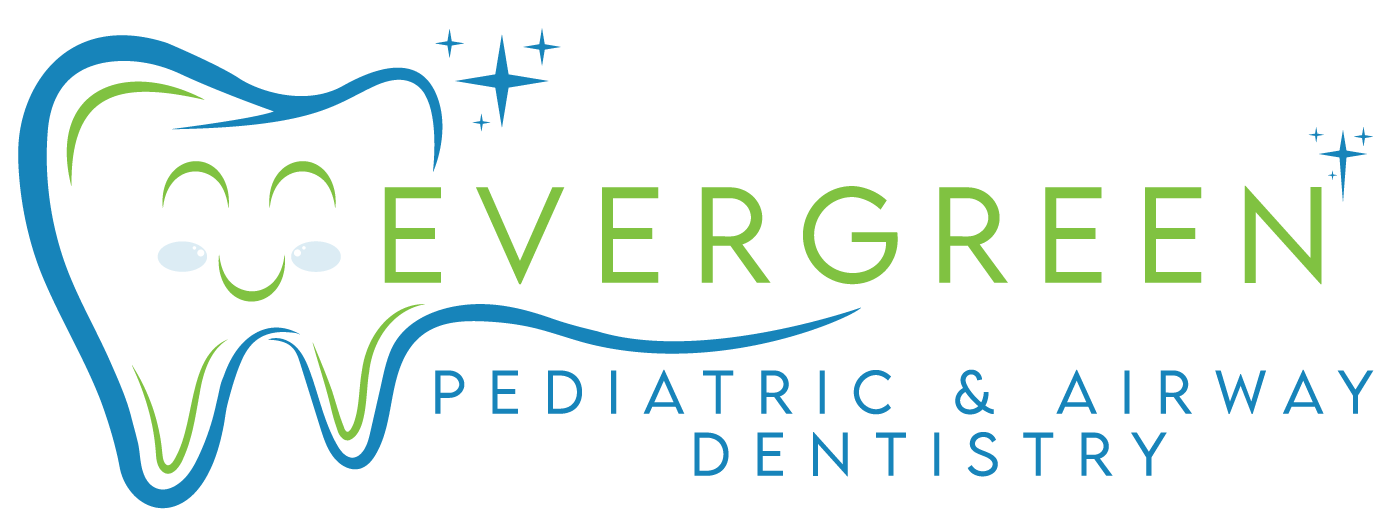Is your child struggling with feeding or speech issues? Tongue tie, a condition where the tissue under the tongue is too short, can create significant challenges. In this guide, readers will explore two treatment options: laser frenectomy and traditional surgery. Key points include how each method works and the factors to consider when choosing the right approach. By understanding these options, parents can make informed decisions to improve their child’s quality of life and alleviate common concerns associated with tongue tie.
Key Takeaways
- tongue tie can affect speech development, feeding, and oral hygiene in children
- laser frenectomy offers less discomfort and quicker recovery than traditional surgery
- understanding treatment options helps parents make informed decisions for their child’s care
- success rates in feeding and speech outcomes are crucial when choosing treatment methods
- healthcare providers can guide families in selecting the best treatment for tongue tie
Overview of Tongue Tie and Treatment Approaches
Tongue tie, also known as ankyloglossia, occurs when the thin piece of tissue connecting the tongue to the floor of the mouth is too short or tight. This condition can limit the tongue’s range of motion, affecting speech development, feeding, and oral hygiene. In infants, a restricted tongue can lead to difficulties with breastfeeding, potentially impacting weight gain. For more information, please contact us or explore understanding airway dentistry.
When it comes to treatment, options include traditional surgery and laser frenectomy. Traditional surgery involves cutting the frenulum using a scalpel, while laser frenectomy uses a focused beam of light to achieve a similar result with less bleeding and discomfort. Both approaches aim to free the tongue, improve mobility, and enhance pediatric dental care and understanding airway dentistry for affected children. For more information, contact us.
Choosing the right treatment method often depends on the severity of the tongue tie and the child’s specific needs. Pediatricians and dentists typically assess the situation, considering the child’s age, symptoms, and the desired outcome. A well-informed decision helps ensure the best care and optimal recovery for little ones facing this challenge. For additional support, contact us to explore options like vivos pediatric treatment and pediatric sleep apnea treatment:
Introducing Laser Frenectomy and Its Mechanism
Laser frenectomy is a modern approach for addressing tongue tie, designed to enhance healing and improve latch during breastfeeding. Utilizing laser technology, this method allows for precise incision without the complications associated with traditional surgery. Different types of laser beams create varying effects, each suited to specific cases. Understanding these elements helps caregivers make informed decisions about airway dentistry solutions and pediatric sleep apnea treatment, and ensures better outcomes for children needing treatment. For more information, contact us.
Definition and Purpose of Laser Frenectomy
Laser frenectomy is defined as a minimally invasive procedure used to treat tongue tie in infants and children. This technique involves the use of a focused laser beam to precisely cut the frenulum, which significantly reduces discomfort and promotes quicker healing compared to traditional surgery. Anesthesia is often minimized or avoided altogether, making the process safer and easier for young patients while ensuring better oral hygiene and feeding outcomes. For more information, contact us.
- Minimally invasive approach improves recovery times.
- Less bleeding and discomfort than traditional methods.
- No need for extensive anesthesia in many cases.
- Facilitates better latch during breastfeeding.
- Encourages improved oral hygiene post-procedure.
How Laser Technology Works in Frenectomy
Laser technology in frenectomy utilizes a dental laser to precisely target and cut the frenulum, which can significantly reduce the risk of bleeding and discomfort for young patients. This method represents a modern solution at evergreen pediatric dentistry, emphasizing the need for effective treatment of tongue tie and understanding airway dentistry, ultimately enhancing the child’s ability to breastfeed and maintain oral hygiene. With a pediatric dentist experienced in laser frenectomy, parents can expect a swift procedure that benefits children by allowing them to recover quickly while minimizing anxiety associated with traditional surgery. For more information on vivos pediatric treatment, please contact us.
- Dental laser offers precision cutting without traditional surgical risks.
- Minimized bleeding and faster healing times support better recovery.
- Pediatric dentist guides parents through the process to ensure comfort and understanding.
Differences in Laser Beam Types
Different types of laser beams used in frenectomy procedures can greatly affect the outcome. For instance, some lasers provide better coagulation, which helps seal blood vessels as they cut, reducing bleeding compared to traditional scalpel methods. Others might be optimized for specific areas in the mouth, like the lip or gums, ensuring that the procedure is as effective and comfortable as possible for young patients. Each type of laser offers unique benefits, allowing pediatric dentists to tailor the treatment to the child’s needs. For more information about vivos pediatric treatment, contact us:
- Minimally invasive options enhance healing and comfort.
- Specific laser beams create less trauma in sensitive mouth areas.
- Enhanced coagulation capabilities reduce the risk of post-operative complications.
Examining Traditional Surgical Methods

Traditional frenectomy procedures for tongue tie treatment involve various techniques, often utilizing simple surgical methods. Common tools include scalpels and scissors, with different approaches tailored to the child’s needs. Typically, sedation is required, depending on the child’s age and anxiety levels. understanding airway dentistry. Understanding these traditional methods provides valuable context as they contrast with modern laser approaches, particularly regarding tissue management and breastfeeding support. For more information, you can contact us or take our kids airway quiz.
Types of Traditional Frenectomy Procedures
Traditional frenectomy procedures typically involve the use of scissors or scalpels to cut the tight frenulum connecting the tongue to the floor of the mouth. This surgical method can effectively release the tongue but may leave a small scar and requires careful tissue management. Parents may want to consider the benefits of laser frenectomies, which often minimize discomfort and reduce the likelihood of scarring compared to traditional surgery, ensuring a more comfortable experience for their child.
Common Tools and Techniques Used
Traditional surgical methods for treating tongue tie typically involve tools like scalpels and scissors, which allow dentists to make precise incisions to release the tight frenulum. This approach, while effective, may result in some pain for the patient, and proper oral hygiene is crucial during the recovery phase to prevent infections. The aim is to restore tongue mobility efficiently, ensuring that the patient’s ability to feed and speak improves while minimizing discomfort.
Typical Anesthesia Requirements
When it comes to traditional surgery for tongue tie, anesthesia plays a key role in ensuring a comfortable experience for young patients. Depending on the child’s age and anxiety levels, local anesthesia may be used to numb the area while minimizing discomfort during the procedure. In some cases, sedation might be administered to help the child relax, especially if they are particularly anxious about the surgical release that aims to improve speech and breathing functions:
- Local anesthesia numbs the frenulum area.
- Sedation helps anxious kids remain calm during surgery.
- Understanding anesthesia can ease parental concerns.
Comparing Efficacy of Laser and Traditional Approaches
Success rates for feeding and speech outcomes play a crucial role in choosing between laser and traditional surgery for tongue and lip ties. This section evaluates each method’s effectiveness, while also assessing postoperative complications and the long-term effects on oral health. Understanding these aspects provides valuable insights for parents considering options in pediatric dentistry, ensuring their child can speak properly and thrive.
Success Rates in Feeding and Speech Outcomes
Success rates in feeding and speech outcomes are critical considerations for parents evaluating treatment options for tongue tie. Laser frenectomy often leads to quicker improvements in breastfeeding and speech clarity, which many parents find reassuring. For those concerned about issues like pediatric sleep apnea, reaching out to professionals for pediatric airway dentistry can provide effective solutions; scheduling a consultation allows families to explore options tailored to their child’s specific needs.
Assessment of Postoperative Complications
When considering tongue tie treatments, it’s essential to assess potential postoperative complications associated with both laser frenectomy and traditional surgery. While laser procedures often result in less stress and quicker healing due to minimal invasiveness, some parents may still worry about how their child’s anatomy responds post-procedure. Comparatively, traditional surgery sometimes leads to more significant wounds that may require closer monitoring to prevent infections, impacting overall recovery. For those looking to explore the best option for their child, reaching out to a pediatric dentist can help clarify concerns and guide decisions on the most suitable treatment. Remember to book your appointment to ensure timely care for your little one’s needs.
Long-Term Effects on Oral Health
When evaluating the long-term effects of tongue tie treatments, both laser frenectomy and traditional surgery offer distinct benefits for oral health. Laser frenectomy may lead to fewer complications and less scarring, generally promoting better tongue mobility which allows for improved speech and nutritious feeding habits as children grow. Parents often find that these outcomes support better overall hygiene, significantly reducing the likelihood of future dental issues.
Patient Considerations in Choosing Treatment

When deciding between laser frenectomy and traditional surgery for tongue tie treatment, several factors come into play. Key considerations include the healthcare provider’s recommendations, which can guide families toward the best option. Understanding costs and insurance coverage also plays a significant role in the decision-making process, ensuring that families can access the right care for their child’s needs.
Factors Influencing Treatment Decision
Several factors can influence the decision-making process when selecting between laser frenectomy and traditional surgery for treating tongue tie. Parents often consider their child’s specific symptoms, the severity of the condition, and the recommendations from their pediatric dentist. Financial aspects, such as insurance coverage and out-of-pocket costs, may also significantly impact the final choice, ensuring families opt for the treatment that best fits both their child’s needs and their budget:
- Child’s symptoms and severity of tongue tie.
- Pediatric dentist’s recommendations and expertise.
- Insurance coverage and treatment costs.
Role of Healthcare Provider Recommendations
Healthcare providers play a key role in guiding families through the decision-making process for tongue tie treatment options, whether it be laser frenectomy or traditional surgery. Their expertise allows parents to gain valuable insights on the specific needs of their child, including the severity of the tongue tie and potential speech or feeding impacts. By discussing the pros and cons of each method, healthcare providers help families feel more confident in making an informed choice that best suits their child’s situation:
- Understanding the severity of the tongue tie.
- Discussing treatment options, including laser and traditional methods.
- Addressing parental concerns and preferences.
Understanding Costs and Insurance Coverage
Understanding the costs and insurance coverage for tongue tie treatment is key for families considering laser frenectomy or traditional surgery. Often, the cost can vary based on the chosen method and the clinic. Some insurance plans may cover the procedure, while others might require out-of-pocket payment, making it essential for parents to check with their insurance provider for specific details. Consulting with the pediatric dentist can also help families navigate financial options, allowing them to make the best decision for their child’s needs.
Insights From Patients Who Have Experienced Both Options
Patients who have undergone both laser frenectomy and traditional surgery for tongue tie often share personal stories revealing varied experiences. Factors such as pain levels during recovery and satisfaction with treatment outcomes are commonly discussed. Understanding these insights provides valuable context for families considering their options, highlighting the significance of treatment choice in achieving improved feeding and speech development.
Personal Stories: Laser vs. Traditional
Many parents have shared their experiences when choosing between laser frenectomy and traditional surgery for tongue tie treatment. Some reported that the laser option offered quicker recovery with less discomfort, allowing their child to resume breastfeeding almost immediately. In contrast, others who opted for traditional surgery noted longer recovery times and a greater emphasis on post-operative care, including pain management and oral hygiene, making it essential for parents to weigh their options based on personal needs and circumstances:
Experience of Pain and Recovery
Parents whose children underwent laser frenectomy often report a more comfortable recovery, with many noting that their little ones displayed far less pain and discomfort compared to traditional surgery. In contrast, those who opted for traditional methods frequently shared experiences of prolonged healing times, requiring careful monitoring and pain management throughout recovery. This feedback helps highlight the differences in patient experiences, making it essential for families to carefully evaluate the best approach for their child’s needs:
Overall Satisfaction With Treatment Choices
Parents often express varied levels of satisfaction with their chosen treatment for tongue tie, influencing their decisions between laser frenectomy and traditional surgery. Many families report high satisfaction with laser frenectomy, citing quicker recovery and less discomfort, which allows for nearly immediate resumption of breastfeeding. In contrast, those opting for traditional surgery frequently note longer healing times and more extensive post-operative care as significant factors in their overall experience:
Conclusion
Choosing between laser frenectomy and traditional surgery for tongue tie treatment is a significant decision for parents, as it directly impacts their child’s feeding and speech development. Laser frenectomy offers faster recovery, reduced discomfort, and less need for extensive anesthesia, making it a more appealing option for many families. In contrast, traditional surgery may lead to longer healing times and increased care requirements post-procedure. Ultimately, understanding these treatment options enables families to make informed choices that best support their child’s health and well-being.
Schedule a check-up with Dr. Susan Kim today and head over to our site at www.evergreenkidsdentist.com for more info!
Schedule Your Child’s Consultation Today!
12910 Totem Lake Blvd NE #103, Kirkland, WA 98034
(425) 814-3196 https://evergreenkidsdentist.com/



